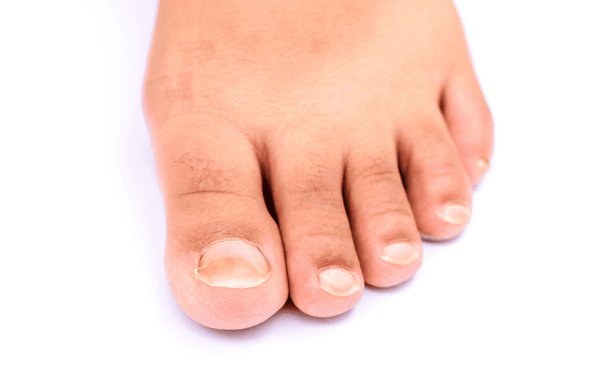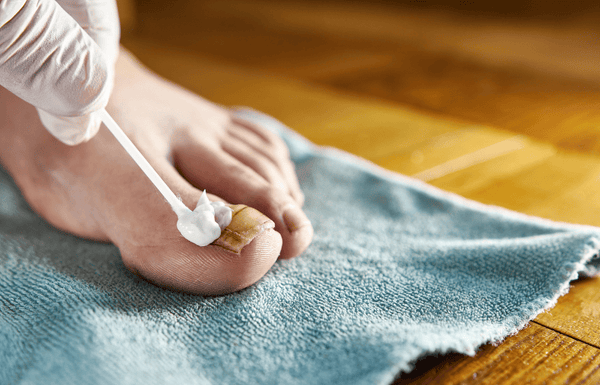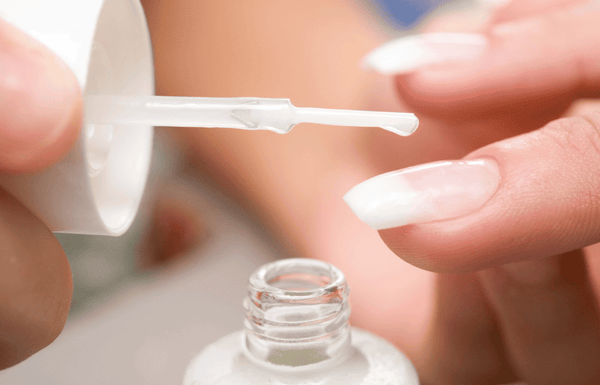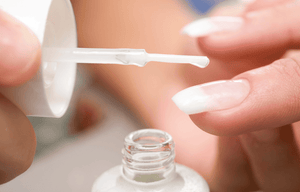
henever you notice unsettling changes like discoloration, a thick toenail, or a general distortion, it's natural to wonder what's going on down there:
Is it a fungal nail infection? Or is it something else, like an injury?
For many, distinguishing between nail fungus and nail trauma is confusing. Both conditions have similar-looking symptoms like thickening, yellowing, cracking, and deformity.
However, you have to identify the correct cause to get the correct treatment. Antifungal medication won't fix a nail bed damaged by repetitive pressure, and ignoring a fungal infection can make it spread and worsen.
Our latest blog post will help you understand the common culprits behind these nail changes, signs of nail trauma vs. fungal infection, and how to get an accurate diagnosis with the right treatment.
Understanding Healthy Nails
Before diving into what can go wrong, what should a healthy nail look and feel like in the first place?
Normal nails are typically clear or a very light pink, smooth, and relatively uniform in thickness. They should be firm but flexible, not brittle or crumbly.
Nails grow from the nail matrix, located at the base of the nail under the cuticle. New nail cells are constantly produced, pushing older cells forward, forming the visible nail plate.
This growth process is slow; toenails can take 12 to 18 months to grow from base to tip. The slow growth rate is why nails are particularly susceptible to damage and infection. Once an issue starts, it takes a long time for the nail to grow out and get replaced with a healthy nail.
What Is Nail Fungus?
A fungal nail infection, medically named onychomycosis, occurs when microscopic fungi, specifically dermatophytes, yeasts, or molds, infect the nail. These organisms thrive in warm, moist, dark environments, so shoes and socks are an ideal breeding ground.
The infection typically starts as a small white or yellow spot under the tip of the nail. As the fungus penetrates deeper, it can cause the nail to thicken, discolor, and crumble at the edge.
The fungi infect the nail bed (the skin underneath the nail) and the nail plate itself, gradually destroying the nail's structure.
Common risk factors for developing a fungal nail infection include sweaty feet, tight shoes, walking barefoot in public, age, weakened immune system, and athlete’s foot. Typical symptoms include:
- Yellow or Brown Discoloration
- Thickening
- Brittleness and Crumbling
- Distortion
- Possible Odor
What Is Nail Trauma?
Nail trauma refers to any injury to the nail or the nail unit, aka the surrounding structures, including the nail bed and matrix. Acute injuries, repetitive pressure from ill-fitting shoes, and sports injuries are common causes.
An injury can damage the nail matrix, leading to abnormal nail growth and can also cause bleeding under the nail, appearing as a dark spot. Repetitive micro-trauma can trigger chronic inflammation and thickening of the nail as the body tries to protect the underlying structures.
Symptoms of trauma often include:
- Dark Spots: A black, blue, or purple discoloration under the nail, caused by blood pooling (subungual hematoma).
- Thickened or Distorted Nail: Chronic trauma can cause the nail to be permanently thickened, ridged, or misshapen.
- Temporary or Permanent Nail Loss: Severe trauma can make the nail lift off the nail bed and eventually fall off. If the matrix is severely damaged, the nail may not grow back correctly or at all.
- Pain: Acute trauma is usually painful, though chronic repetitive trauma might cause only mild discomfort or none at all.
Key Differences Between the Two
1. Onset
Fungus: The changes usually appear gradually, starting subtly and worsening over weeks or months.
Trauma: Changes are typically sudden, occurring immediately after a specific injury or becoming noticeable soon after a period of new or increased activity (e.g., after starting a new running routine).
2. Pain
Fungus: Usually mild or absent. While the nail might feel uncomfortable or pressure might build under a very thick nail, it's rarely acutely painful unless a secondary bacterial infection develops.
Trauma: Acute trauma like stubbing a toe can be acutely painful. Chronic repetitive trauma might cause mild discomfort, tenderness, or a feeling of pressure.
3. Color Changes
Fungus: Typically results in yellow, white, brown, or greenish discoloration.
Trauma: Often presents with dark purple, black, or red discoloration due to blood under the nail. Over time, chronic trauma can cause a yellowed, thickened appearance that mimics fungus.
4. Progression
Fungus: Fungal infections often spread from one nail to adjacent nails, or even to the skin of the foot.
Trauma: Nail trauma stays isolated to the injured nail. If multiple nails are affected, it might point to repetitive trauma from footwear or a systemic issue, but not the spreading pattern seen with fungus.
5. Odor
A distinctive, sometimes slightly foul odor can be associated with advanced fungal infections due to debris under the nail. Trauma alone typically does not produce an odor unless a secondary infection is present.
How to Get the Right Diagnosis
Given the similarities and the importance of correct treatment, self-diagnosis can often lead to delayed healing or inappropriate treatment. This is why seeing a foot specialist or a dermatologist is highly recommended if you have persistent or concerning nail changes.
These specialists have the expertise and diagnostic tools to accurately identify the cause, leveraging microscopy, fungal culture, and biopsy techniques.
Relying solely on visual cues can be misleading. A professional diagnosis means you’ll receive the most effective and targeted treatment, saving you time, discomfort, and potentially preventing complications.
Treatment Options
Once the cause is identified, appropriate treatment can begin. Patience is a virtue here, as both conditions can take months to fully resolve due to the slow growth rate of nails.
For Nail Fungus
- Topical Antifungal Medications: For mild to moderate infections, medicated nail lacquers or creams applied directly to the nail can be effective when applied consistently for many months.
- Oral Antifungal Medications: For more severe or stubborn infections, oral antifungals like terbinafine or itraconazole are often prescribed. These are typically taken for several weeks to months and work systemically but can have side effects which may require liver function monitoring.
- Laser Therapy: Some clinics offer laser treatments to kill the fungus in the nail directly.
- Nail Removal: In severe, painful, or unresponsive cases, surgical or chemical removal of the infected nail may be considered to allow a healthy nail to grow.
For Nail Trauma
- Trimming and Protecting the Nail: Keep the nail short and protect it from further injury with properly fitting shoes.
- Treating Underlying Bruising or Damage: If there's a subungual hematoma, a doctor might drain the blood to relieve pressure and pain.
- Possible Nail Removal: If the nail is severely injured, loose, or causing significant pain, the doctor might remove it to allow a new, healthy nail to grow.
- Addressing the Cause: Identifying and correcting the source of repetitive trauma is essential to prevent recurrence.
Final Thoughts
Thickened, yellowed, or discolored toenails are both uncomfortable and unsightly. Whether the culprit is a persistent fungal nail infection or the lingering effects of nail trauma, each requires a different approach.
Remember that getting professional care early helps avoid worsening conditions, prevents complications, and puts you on the right track to healing. Never fear, with proper diagnosis and consistent treatment, healthy nails will come back again!
Treat Nail Bed Fungal Infections at Home!
Try Dr. AntiFungus Restoration Antifungal Nail Bond and Antifungal Press On Nails! Both are invented by doctors and recommended by dermatologists and podiatrists across the country.





